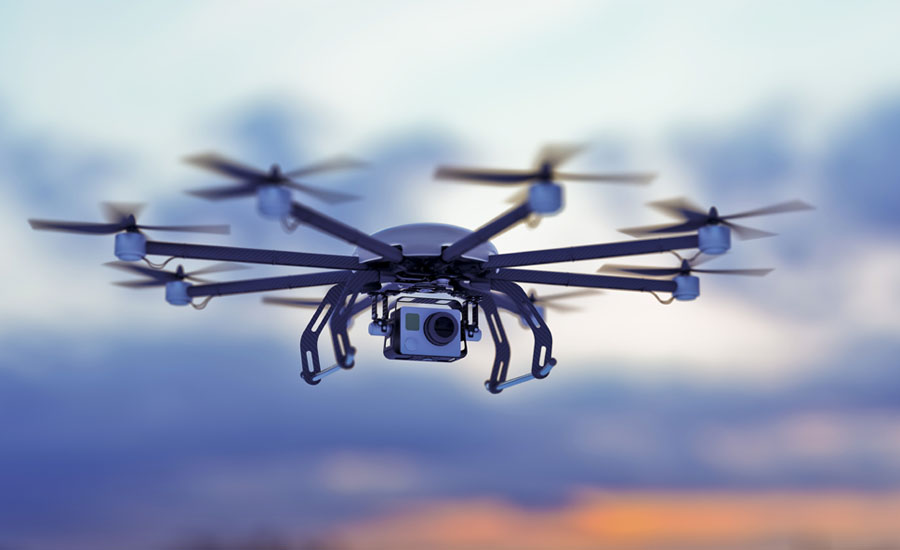Posted with permission from Fairwarning.org:
As the nation’s fleet of small recreational and commercial drones keeps soaring — the government projects nearly 3 million will be in the skies by 2022 — safety concerns are rising even as federal enforcement stalls.
The Federal Aviation Administration has collected 6,117 reports of potentially unsafe use of drones from February, 2014 through April of this year, according to a recent report by the Government Accountability Office. What’s more, an FAA-industry working group wrote in December that, while most of the incidents don’t appear to be serious, “There is general consensus that some of the sightings are potentially high risk.”
Yet few of these reports have been investigated and, in 2016 and 2017, just 32 incidents resulted in any enforcement action, an FAA spokesman told FairWarning.
The FAA, in defending its practices, points out that investigations face big obstacles: Drones are not customarily detected by radar, there usually is no physical evidence to recover and it’s generally not clear who the drone operators are. Still, the FAA, responding to the GAO’s call in its May report for the agency to help “determine whether additional actions are needed to ensure the safety of the national airspace,” agreed it could strengthen its efforts.
The FAA said in an email to FairWarning that it was “very proud of our safety record,’’ but that agency officials “appreciate the GAO’s recommendation.”
The situation worries safety advocates. “I hate to say it, but it’s been proven over and over — the safety agencies don’t usually act until there’s blood on the ground,” said Paul Hudson. president of FlyersRights.org, an airline passenger advocacy group. “Without some changes, I’m afraid we’re just waiting for the first disaster to occur.”
There already have been collisions that highlight the risks. The GAO noted that last September a drone collided with an Army helicopter near New York’s Staten Island, and the following month a drone collided with a passenger plane in Canada. The FAA also received a report of a person on the ground being struck by a drone and losing consciousness.
Some of the FAA’s enforcement actions have simply led to the agency issuing warning letters or counseling drone operators on how to comply with safety results. Only one case since 2016, the GAO report said, has led to a penalty, which amounted to $9,700.
By far the largest civil penalty the FAA ever collected from a drone operator stemmed from a case against SkyPan International Inc. The FAA accused the Chicago-based company of conducting 65 unauthorized commercial aerial photography flights over restricted airspace in New York City and Chicago between 2012 and 2014.
The agency proposed a $1.9 million fine in late 2015, saying SkyPan operated in a reckless manner. In early 2017, the FAA announced that the case had been settled for $200,000.
Small drones, which range in weight from about a half-pound to just under 55 pounds, are generally prohibited from flying in the U.S. above 400 feet, over people or near airports without prior authorization.
The FAA estimates that at least 1.7 million small drones are being operated in the U.S. That’s more than five times higher than the number of manned aircraft. And, in 2022, the drone total is projected to reach 2.9 million. Meanwhile, reports of potentially hazardous sightings also are climbing. In 2014, the GAO said, there were 233 such reports; in 2017, there were 2,185.
“Anytime there are more operating, the risk goes up,” said University of Michigan aerospace engineering professor Ella Atkins. “So the risk absolutely is going up.”
The FAA website provides summaries of drone incidents – or “sightings,” as the agency calls them – reported by aircraft pilots, air traffic controllers, law enforcement officials and others. On one randomly chosen day, March 31, there were seven reports overall, coming from such places as New York City, San Jose, California, and Pendleton, Oregon. They included sightings of drones well above 400 feet, near airports or in landing routes. The Oregon case involved a drone that reportedly crashed and burned on the north side of an airport, starting a two-acre brush fire. In the San Jose case, a two-foot diameter drone allegedly passed within 100 feet of an aircraft.
In addition, such federal agencies as the Department of Defense and the Bureau of Prisons have recorded multiple incidents of drones flying over their property or otherwise interfering with their operations.
In testimony before a Congressional hearing last year, defense officials said that unauthorized drone flights over Navy and Air Force installations “represent a growing threat to the safety and security of nuclear weapons and personnel.” Military agencies reported 128 incidents in a two-year period beginning in January 2015.
Federal correctional officials, for their part, reported seven incidents of unmanned vehicles dropping contraband into prisons from November 2015 through December 2017.

 Paul Feldman is a staff writer for FairWarning. Paul worked as a staff writer and editor at the Los Angeles Times for more than 30 years. He was a reporter on the Metro staff, and later a Metro desk editor, overseeing coverage of the environment, legal affairs and other topics. From 2003 through 2015, he served as an assistant foreign editor, working with a team of foreign correspondents on breaking news and features. He was a member of Metro teams that won two Pulitzer Prizes and two American Bar Assn. Silver Gavel awards. He also won the gold medal in a ping pong tournament on a Royal Caribbean cruise to Alaska.
Paul Feldman is a staff writer for FairWarning. Paul worked as a staff writer and editor at the Los Angeles Times for more than 30 years. He was a reporter on the Metro staff, and later a Metro desk editor, overseeing coverage of the environment, legal affairs and other topics. From 2003 through 2015, he served as an assistant foreign editor, working with a team of foreign correspondents on breaking news and features. He was a member of Metro teams that won two Pulitzer Prizes and two American Bar Assn. Silver Gavel awards. He also won the gold medal in a ping pong tournament on a Royal Caribbean cruise to Alaska. 

